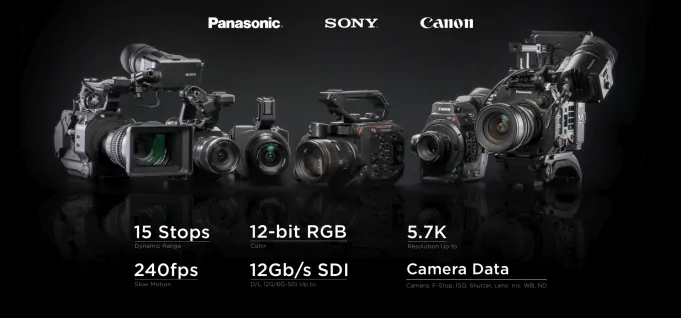ProRes RAW is here. Apple today took the wraps off its new video format to coincide with the NAB (professional video) show in Las Vegas.
The codec is available in two modes, ProRes RAW and ProRes RAW HQ. You can learn more about the technical details over on Newsshooter — a handy resource for those who want to stay up-to-date on camera and industry news.
Currently, Final Cut Pro X ($299 for new users) from Apple is the only video editing platform to support ProRes RAW, however I’d expect most others such as Blackmagic Resolve and Adobe Premiere Pro to also eventually support it. Given that the regular version of ProRes is so ubiquitous I can’t see why its RAW counterpart won’t achieve the same level of success.
As of today, 8 cameras will support ProRes RAW:
- Sony FS7/FS7 II
- Sony FS5
- Sony FS700
- Canon C300 Mark II
- Canon C500
- Panasonic Varicam LT
- Panasonic EVA1
In addition to having one of the above cameras, you’ll also need to use an external monitor/recorder to capture ProRes RAW. That’s where one of my favorite accessory makers, Atomos, comes in. Also just in time for NAB, Atomos announced support for the new codec, and will include it in the Atomos Shogun Inferno recorder. For those who own an Atomos device will know they’re well made, easy to use thanks to a highly responsive screen and, best of all, capture all sorts of flavors of ProRes (and Cinema DNG, not my favorite).
Data rates for ProRes RAW HQ are said to be 80-140MB/s for 4kp24. In addition you’ll get 12-bit RGV color, sensor and camera data baked into the files, plus support for resolutions up to 8K.
Basically, ProRes RAW is Apple’s attempt to own the high end market for film and video production. Others competing in this space include RED (Redcode RAW .R3D) and Arri (ArriRAW). Canon most recently introduces its own flavor, dubbed Canon Cinema RAW Light as part of the Canon C200 camera release. Given that resolutions are increasing and modern video technologies like high dynamic range (HDR) and high frame rates for slow motion and extended color bandwidth for improved color grading options it would only make sense Apple would introduce something to compete in this space.
Why RAW?
In short, RAW files capture more information than standard, heavily compressed files. There’s more color information, more detail information. Just more, more, more.
Consequently, when in post-production, colorists and editors have more flexibility when it comes to color grading, and the ability to tweak an image to taste. I can attest, after working with Redcode it’s hard to go back to highly compressed video files. I find with Redcode I can make massive changes in things like ISO, shadows, saturation, etc. with little to no noticeable image degradation. The same can’t be said when I do the same adjustments using a file, say, from a Canon DSLR, or even a Canon C100 or the vaunted 10-bit files from a GH5. Redcode is just magic. I suspect ProRes RAW will be quite good as well. And, unlike Redcode, many companies are (and will) license it so the format should be widely adopted and used in short order.
On the downside, RAW does require higher data rates, and, hence, more storage. One thing I especially like about RED cameras is that you can easily dial in the amount of compression to use on any given project. Simply tap the screen and choose a compression ratio from as low as 3:1 all the way up to 10:1 and beyond. You can instantly see the impact of choosing less compression or more compression has on your memory card and recording times. For what we do here on Stark Insider, 8:1 or 10:1 is fine as we deliver video to the web — mostly Vimeo and YouTube (Stark Insider YouTube Channel). Others who are working on features or documentaries that will screen at movie theaters may want to use 3:1 to maximize the amount of detail and resolution included in the files.
It might seem like a small bit of tech news. But I see this as a big announcement and agree with others who suggest this could have massive impacts on the mid to upper-range video market.
For now, I happily shoot and edit when I can on Redcode. However, I’d love to see a ProRes RAW option eventually for something like the GH5. Could it happen? Maybe. How about the new Canon C200? That would be nice too, as that camera surely needs a codec to bridge the data thirsty Canon Cinema Raw Light and lightweight 8-bit codec that Canon offers.


